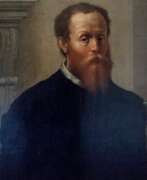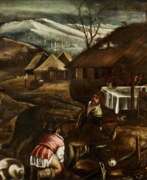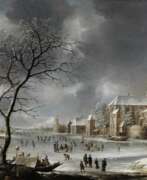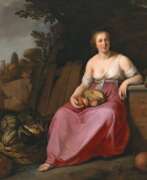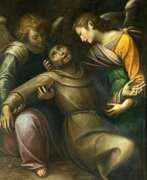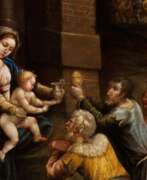Artists Mannerism


Pieter Aertsen, a Dutch painter born in 1508 in Amsterdam and known as ‘Lange Pier’ for his height, was a significant figure in the Northern Mannerism style. His artistic journey began with religious paintings, but he became renowned in the 1550s for his pioneering work in domestic scenes, where he vividly portrayed everyday objects like furniture, cooking utensils, and food.
Pieter Aertsen is credited with inventing the monumental genre scene, a novel concept in painting that combined still life and genre painting, often incorporating a biblical scene in the background. This style is exemplified in his work "Butcher's Shop" (1551), which is considered the earliest example of Mannerist inversion of still life in Northern painting. In this work, the everyday subject matter of a butcher's stall is given more prominence than the historical or religious scene depicted in the background.
Pieter Aertsen's work reflected the rich mercantile culture of Antwerp, where he lived for many years before returning to Amsterdam in 1556. His paintings often included a wide range of subjects, from market scenes to kitchen tableaux, filled with an abundance of fruits, vegetables, meats, and other food items. His unique approach to painting, which combined the teachings of classical art with the ideas of contemporary artists, made a lasting impact on the genre.
In addition to his genre scenes, Pieter Aertsen continued to create religious works throughout his life, although many were lost during the waves of iconoclasm that swept across northern Europe during the Protestant Reformation. A surviving religious work of his is the "Crucifixion" in the Royal Museum of Fine Arts Antwerp.
Pieter Aertsen's legacy continued through his pupils, including Stradanus and his nephews, Joachim Beuckelaer and Huybrecht Beuckeleer. His influence on the development of still life and genre painting was profound, and his works remain a fascinating study for collectors and experts in art and antiques.
To stay informed about the latest updates, sales, and auction events related to Pieter Aertsen's art, consider signing up for our newsletter. This way, you'll never miss an opportunity to explore and possibly acquire works from this master of genre and still life painting.


Francesco Albani was a renowned Italian painter and fresco artist. He is celebrated for his contributions to the academic Bolognese school, which was profoundly influenced by the Carracci family, under whom Albani trained. Albani's artistic journey began at the young age of 12, marking the start of a career that would see him become one of the 17th-century's most esteemed Bolognese masters.
Francesco Albani's style is characterized by its lyricism and often features cherubic figures, a trait that became his signature. Despite not embracing the monumentality or tenebrism prevalent in the works of his contemporaries, his thematic appeal and mannerist elegance have earned him a place in art history. His works often comprise mythological and religious scenes, executed with a refined and lyrical view of nature. This approach helped disseminate the classical ideals prominent in Carracci's landscapes.
Among Francesco Albani's notable works are his frescoes in the Hall of Aeneas at Palazzo Fava in Bologna and Palazzo Doria Pamphilj in Rome, and his paintings "The Judgment of Paris" and "The Toilet of Venus". His works can be found in prestigious collections worldwide, including the Museo del Prado, Galleria Borghese in Rome, and the Hermitage in St. Petersburg.
Francesco Albani's influence extended beyond his lifetime, with his classicising and idealised scenes finding favor with 18th-century French painters and collectors. However, his popularity waned during the 19th century. Despite this, his work remains an integral part of the study of Baroque art, particularly in understanding the transition from Mannerism to Baroque styles.
For collectors and experts in art and antiques, the legacy of Francesco Albani presents an opportunity to explore a pivotal moment in the history of Italian painting. His works not only provide aesthetic pleasure but also serve as important cultural artifacts, offering insights into the artistic trends and societal values of the 17th century.
If you are passionate about art history and wish to stay informed about new discoveries, sales, and auction events related to Francesco Albani, consider signing up for updates. This subscription will ensure you remain at the forefront of developments in the world of art and antiques, especially concerning this remarkable Italian master.


Cherubino Alberti, also called Borghegiano, was an Italian engraver and painter. He is most often remembered for the Roman frescoes completed with his brother Giovanni Alberti during the papacy of Clement VIII. He was most prolific as an engraver of copper plates.


Cristofano Allori was an Italian painter of the late Florentine Mannerist school, painting mostly portraits and religious subjects. Allori received his first lessons in painting from his father, Alessandro Allori, but becoming dissatisfied with the hard anatomical drawing and cold coloring of the latter, he entered the studio of Gregorio Pagani. When still young he became a court portraitist for the Medicis, though many of his commissions were replicas of portraits by his predecessor Bronzino, or had participation by others.[citation needed. His pictures are distinguished by their close adherence to nature and the delicacy and technical perfection of their execution. His most famous work, in his own day and now, is Judith with the Head of Holofernes.


Alessandro Allori, full name Alessandro di Cristofano di Lorenzo del Bronzino Allori, was an Italian painter of the Florentine school of late Mannerism.
Allori was one of the major artists of Florence in the late 16th century. He painted prostrate images and portraits. His son Cristofano Allori (1577-1621) also became an artist.


Christoph Amberger was a German painter of the Renaissance. He is known primarily as a portrait painter and is considered one of the most prominent masters of this genre of his generation.
Amberger built his career in the city of Augsburg, which was then considered one of the cultural centers of Europe. He painted numerous portraits of Augsburg patricians and their wives, prominent scholars, and the Holy Roman Emperor Charles V. These works laid the foundation for the artist's success. Amberger also designed the high altar of Augsburg Cathedral.


Giovanni Andrea Ansaldo was an Italian painter active mainly in Genoa. He trained under Orazio Cambiasi and possibly collaborated with Bernardo Strozzi. Ansaldo's works are typical of the Genoese eclecticism of the early 17th century, influenced by Flemish artists. Ansaldo was responsible for the fresco decoration of the cupola of the Basilica della Santissima Annunziata del Vastato of Genova. His Annunciation fresco is considered the first true Baroque painting in the city.


Amico Aspertini was an Italian Renaissance painter, draughtsman, and sculptor, considered one of the leading representatives of the Bolognese school of painting.
He was trained in the family workshop and was influenced by the artists of the Ferrara school, Ercole de'Roberti, Lorenzo Costa, and Francesco Francia. He worked as a painter and sculptor, and was also an excellent draughtsman, as evidenced by his many surviving drawings and sketches. Contemporaries marveled at his complex and impulsive character and noted that he worked with both hands simultaneously.
Aspertini painted splendid portraits as well as numerous frescoes and altarpiece paintings in chapels and churches in Italy. Many of his works are eccentric and eclectic, even whimsically fantastical, his complex style anticipating Mannerism.


Hans Baldung, also known as Hans Baldung Grien, was a prominent figure in the German Renaissance, celebrated for his innovative approach to painting, printmaking, and drawing. Born around 1484 in Schwäbisch Gmünd, Germany, and passing away in 1545 in Strasbourg, France, Baldung's career was marked by a distinctive style that art historians have associated with the mannerist tendencies of the time. His work is notable for its exploration of themes such as the imminence of death, the complexities of human sexuality, and scenes of witchcraft, distinguishing him from his contemporaries with a bold and unique artistic voice.
Educated in the workshop of Albrecht Dürer, Baldung quickly developed his own artistic language, absorbing and then transcending Dürer's influence. He is particularly renowned for his altarpieces, portraits, and a series of works that delve into eroticism and the supernatural. Among his most significant contributions is the high altar of the Freiburg Münster, an eleven-panel masterpiece depicting scenes from the life of the Virgin Mary, which remains a testament to his mastery over religious subjects even as he ventured into more secular and profane themes.
Baldung's fascination with witchcraft and his portrayal of witches in art were groundbreaking for the time. His works in this area, such as "The Witches' Sabbath" and "Weather Witches," reveal a complex interplay of humanist thought, classical literature, and contemporary beliefs about witchcraft. They offer a nuanced perspective that blends satire with a deeper commentary on human nature and societal fears, marking Baldung as a pioneer in the visual exploration of these themes.
Despite his engagement with the themes of death and witchcraft, Baldung's oeuvre is also rich in portraits characterized by sharp individualization and psychological depth, as well as altarpieces that convey a profound spiritual and theological insight. His ability to navigate between the realms of the divine and the earthly, the solemn and the profane, solidifies his position as a versatile and innovative artist of the Renaissance.
For collectors and experts in art and antiques, Hans Baldung's work offers a unique window into the confluence of Renaissance artistry, humanist thought, and the socio-religious dynamics of early 16th-century Europe. His paintings and prints not only adorn museums and galleries worldwide but also continue to inspire and provoke deep reflection on the human condition.
To stay informed about new discoveries, exhibitions, and auction events related to Hans Baldung's art, signing up for updates can provide enthusiasts and collectors with valuable insights into the enduring legacy of this remarkable artist. This subscription service is designed to alert subscribers to new product sales and auction events specifically related to Hans Baldung, ensuring that they remain at the forefront of developments in the field of Renaissance art and antiques.


Simone Barabino was an Italian painter of the late-Mannerist style. Born in Val de Polcevera, near Genoa, he was mainly active in his native city, where he trained with Bernardo Castello. Notable works include San Diego restoring sight to blind child for the Nunziata del Guastato in Genoa and Dead Christ with the Virgin and Saints Michael and Andrew for the church of San Girolamo at Milan.


Federico Barocci, an Italian Renaissance painter and printmaker, was celebrated for his vibrant use of color and dynamic compositions. Born around 1533 in Urbino, Italy, a hub of Renaissance culture, Barocci's early life was steeped in the rich artistic heritage of the time. His training included an apprenticeship with his father, a sculptor, and later with notable artists such as Battista Franco Veneziano and Taddeo Zuccari.
Federico Barocci's work, known for its emotional intensity and use of light, positioned him as a critical link between the Mannerist style of the 16th century and the emerging Baroque period. His paintings often depicted religious scenes, imbued with a warmth and spirituality that resonated with viewers. His unique approach to color and composition had a significant influence on later artists, including the Baroque masters Peter Paul Rubens and Gian Lorenzo Bernini.
Despite suffering from chronic illness, possibly due to poisoning, Federico Barocci's output remained prolific and influential. His works can be found in several prestigious galleries, including the Uffizi in Florence, where his "Madonna del Popolo" and "Martyrdom of Saint Vitale" are displayed. These pieces, along with others like "The Deposition" in the Cathedral of Perugia and "Noli me Tangere" in Munich, showcase his mastery in portraying human emotion and divine radiance.
Collectors and experts in art and antiques will appreciate the depth and innovation of Federico Barocci's work. His legacy as a master colorist and draughtsman is undeniable, making his pieces a valuable addition to any collection.
To stay updated on sales and auction events related to Federico Barocci, sign up for our exclusive updates. This subscription ensures you're the first to know about new opportunities to acquire works connected to this remarkable artist.


Fra Bartolomeo was an Italian painter, a notable figure of the High Renaissance. Known for his religious artworks, Fra Bartolommeo's style was deeply influenced by his spiritual journey and association with the Dominican Order.
After receiving his early artistic training from Cosimo Rosselli, Bartolommeo's style initially exhibited influences from artists like Piero di Cosimo, Domenico Ghirlandaio, and Filippino Lippi. However, his encounter with Savonarola, a Dominican friar and reformer, in the late 1490s led to a significant spiritual transformation. This encounter influenced him to enter the Dominican monastery at San Domenico in Prato as a novice in 1500, and he temporarily renounced painting. It wasn't until 1504, when he resumed painting as the head of the monastery workshop, that his style saw a significant transformation.
In his works, Fra Bartolomeo beautifully integrated the styles of Leonardo da Vinci and Raphael, especially in his altarpieces, which are imbued with a sense of pietism reminiscent of Fra Angelico. His work is notable for the skilled massing of light and shade, richness in coloring, and delicate handling of drapery. The introduction and use of the lay-figure with joints in his compositions were innovations he is credited with. His masterpiece, St. Mark Evangelist, and the undraped figure of Saint Sebastian, are particularly noted for their expressive power.
Some of his notable works include "Vision of St. Bernard" (1507), "The Holy Family with John the Baptist," and "Virgin and Child with Saints." His art can be found in prestigious galleries, including the Pinacoteca Vaticana, Palazzo Pitti in Florence, and the National Gallery in London.
For art collectors and enthusiasts, Fra Bartolomeo's works represent a blend of spiritual depth and artistic innovation during the pinnacle of the Renaissance period. His legacy in religious art continues to inspire and captivate audiences worldwide.
To stay informed about exhibitions and sales featuring works of Fra Bartolomeo, sign up for updates to explore more about this master's contributions to Renaissance art.
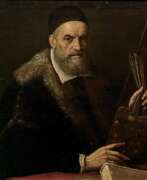

Jacopo Bassano or Jacopo da Ponte was an Italian painter of the Venetian school. He painted biblical scenes and portraits in the late Renaissance and Mannerist style, with a slight touch of Baroque. Bassano was quite realistic in his depictions of everyday objects, animals, homes and landscapes.


Giovanni Battista Beinaschi, an Italian painter and fresco artist of the Baroque era, was born in 1636 and left an indelible mark on the art world before his death in 1688. Renowned for his dynamic compositions and vibrant use of color, Beinaschi's work epitomizes the grandeur and emotive power of Baroque art, reflecting the period's cultural and artistic aspirations.
Beinaschi's contributions to art are notable for their intricate details, dramatic use of light and shadow, and the emotional intensity of the figures portrayed. His mastery in fresco and oil painting allowed him to create expansive religious narratives and intimate portraits alike, each brimming with life and depth.
Among his celebrated works, those housed in esteemed museums and galleries across Europe serve as testaments to his skill and creativity. Beinaschi's frescoes, in particular, are admired for their architectural harmony and the seamless integration of figures into their surroundings, showcasing his innovative approach to spatial composition.
For collectors and experts in art and antiques, Giovanni Battista Beinaschi's paintings are more than just visual delights; they are windows into the soul of the Baroque period. His ability to convey complex emotions and spiritual themes through art makes his works highly sought after and revered in the history of painting.
If you wish to delve deeper into the world of Baroque art and explore the genius of Giovanni Battista Beinaschi, consider signing up for updates. This subscription will keep you informed about new discoveries, sales, and auction events related to Beinaschi's works, ensuring you never miss an opportunity to appreciate or acquire pieces by this exceptional artist.


Jacques Bellange was an artist and printmaker from the Duchy of Lorraine (then independent but now part of France) whose etchings and some drawings are his only securely identified works today. They are among the most striking Northern Mannerist old master prints, mostly on Catholic religious subjects, and with a highly individual style. He worked for fourteen years in the capital, Nancy as court painter to two Dukes of Lorraine, before dying at the age of about forty, and almost all his prints were produced in the three or four years before his death. None of his paintings are known to have survived, but the prints have been known to collectors since shortly after his death, though they were out of critical favour for most of this period. In the 20th century they have been much more highly regarded, although Bellange is still not a well-known figure.


Joachim Beuckelaer, a masterful Flemish painter born around 1533, was renowned for his intricate market and kitchen scenes, which were abundant with detailed depictions of food and household items. His unique approach combined everyday life with religious narratives, often situating biblical episodes within the backdrop of bustling market scenes or domestic settings. This innovative blend of the mundane with the spiritual set the stage for future developments in Dutch and Flemish painting.
Beuckelaer's influence extended beyond his immediate geographic locale, impacting artists across Europe, from Italy to Spain, heralding a new appreciation for kitchen and market scenes that would flourish in seventeenth-century painting. His works were not only appreciated for their aesthetic and technical mastery but also for their ability to capture the essence of sixteenth-century Antwerp life, from the vibrancy of its markets to the intimacy of its kitchens.
His oeuvre includes a variety of subjects, from purely religious works to those that focus solely on still-life elements without any human figures, indicating his versatility and innovation as an artist. Beuckelaer was known for employing techniques that allowed him to efficiently reuse compositions, showcasing his ability to adapt and repurpose his work to meet the demands of his patrons.
Notable works by Beuckelaer, such as the "Four Elements" series, now housed in the National Gallery, London, demonstrate his skill in merging complex allegories with detailed observations from nature and daily life. These paintings are celebrated for their depth of detail and the way they foreground the role of women in the culinary and market spheres.
For collectors and experts in art and antiques, Joachim Beuckelaer's paintings offer a fascinating glimpse into the cultural and social dynamics of the sixteenth century, as well as the evolution of still-life and genre painting in the early modern period. His ability to weave together the secular and sacred, the abundant and the everyday, marks him as a significant figure in the history of art.
To remain informed about the latest discoveries, sales, and auction events related to Joachim Beuckelaer, consider signing up for updates. This subscription is an invaluable resource for those keen to explore the depths of Flemish painting and its enduring influence on European art history.


Abraham Bloemaert was a Dutch painter, draughtsman, and printmaker from the Golden Age of Dutch painting, one of the founders of the Guild of St. Luke in Utrecht. Bloemart was a caravagist. He painted mainly landscapes, mythological and biblical scenes, and pastoral works.


Hans Bol was a Flemish artist renowned for his miniature paintings and prints. Born in Mechelen, Bol was a pivotal figure in the transition from the world landscape tradition to a more realistic portrayal of nature. His early works as a 'water-verwer' offered affordable wall decorations but were susceptible to copying. This led him to create intricate miniatures on parchment, a medium less easily replicated.
Bol's influence on landscape art in the Low Countries is significant. His realistic landscapes, often featuring biblical scenes or daily life, showed a departure from imaginary landscapes, which was common at the time. This shift was partly due to the influence of Pieter Bruegel the Elder. Bol's completion of the Four Seasons series, initially started by Bruegel, established him as a master of landscape art, blending detailed observation with imaginative elements.
Notably, Bol's works are present in prestigious institutions such as the Metropolitan Museum of Art, where pieces like "The Prodigal Son" and various landscapes reflect his mastery of pen, ink, and wash. His artworks, like the "Landscape with a View of Antwerp," stand testament to his skill in capturing the essence of the Dutch landscape, influencing a generation of Dutch painters.
For collectors, auctioneers, and art connoisseurs, Hans Bol's legacy offers a glimpse into the evolution of landscape painting. His works not only adorned the homes of the affluent during his time but continue to be celebrated for their historical and artistic value.
To stay informed about sales and auction events featuring Hans Bol's masterpieces, sign up for updates. By subscribing, you will receive notifications only for new product sales and auction events related to this eminent artist, ensuring you don't miss the opportunity to own a piece of art history.
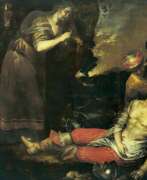

Luciano Borzone was an Italian painter of the late Mannerist and early Baroque periods, working mainly in Genoa. After an apprenticeship with Filippo Bertolotto, his uncle, Duke Alberigo of Massa Lunigiana, patronised his work as a pupil of Cesare Corte.
Luciano Bordzone was an outstanding portrait painter. In Genoa he painted the Purification for the church of San Domenico and the Baptism of Christ for the church of Santo Spirito.


Paul Bril was a prominent Flemish painter, best known for his significant contributions to landscape painting. Born around 1554 in Antwerp, he later moved to Rome, where he became a central figure in the art scene, influencing the Italian and Northern European landscape painting traditions.
Paul Bril's early works were steeped in the Flemish manner, exhibiting a picturesque arrangement of landscape elements with dramatic contrasts of light and dark. His style evolved during his stay in Rome, influenced by the work of Annibale Carracci and Adam Elsheimer. By around 1605, Bril's compositions became more serene and classical, showcasing calmer transitions from foreground to background and embracing pastoral and mythological themes.
Paul Bril's contributions extended beyond his paintings. He was a respected figure in Rome's art community, becoming the first foreign director of the Accademia di San Luca in 1621. His patrons included some of the most influential families in Rome, and his work was sought after by collectors and fellow artists. Bril's influence was profound, impacting future generations of artists, including the Dutch Italianates and genre painters active in Rome.
His works can be found in prestigious galleries worldwide, illustrating his enduring legacy in the art world. For collectors and art and antiques experts, Paul Bril's work represents a significant period in the evolution of landscape painting, blending Flemish traditions with Italian classicism.
For those interested in exploring the captivating landscapes and historical significance of Paul Bril's art, staying informed about new product sales and auction events is essential. Signing up for updates can provide valuable insights and opportunities to acquire pieces associated with this influential artist.


Agnolo di Cosimo di Mariano, also Agnolo Tori, called Bronzino was an Italian painter, an important representative of Mannerism.
Bronzino was a painter of frescoes, altarpieces, devotional paintings and allegorical and mythological scenes. However, he excelled above all as an outstanding portrait painter. As in the case of Raphael, his works could be disseminated through the new possibilities of printmaking.


Adriaen Brouwer was a Flemish painter active in Flanders and the Dutch Republic in the first half of the 17th century. Brouwer was an important innovator of genre painting through his vivid depictions of peasants, soldiers and other "lower class" individuals engaged in drinking, smoking, card or dice playing, fighting, music making etc. in taverns or rural settings. Brouwer contributed to the development of the genre of tronies, i.e. head or facial studies, which investigate varieties of expression. In his final year he produced a few landscapes of a tragic intensity. Brouwer's work had an important influence on the next generation of Flemish and Dutch genre painters. Although Brouwer produced only a small body of work, Dutch masters Peter Paul Rubens and Rembrandt collected it.


Pieter Brueghel the Younger was a Flemish artist celebrated for his detailed landscapes, religious themes, proverbs, and vibrant village scenes. Despite being the son of the illustrious Pieter Bruegel the Elder, Brueghel the Younger carved out his own niche in the art world, earning the moniker 'Hell Brueghel' for his dynamic scenes of fires and energetic copies of his father's peasant life portrayals.
Brueghel the Younger's original creations, such as "The Village Lawyer," showcase his keen observation of village life, merging the energy and boldness of 17th-century style with his father's idiom. His work is characterized by its lively, picturesque depiction of peasants, albeit some critics argue they lack the subtlety and humanism of his father's creations. Despite this, Brueghel the Younger's legacy includes a significant number of original works and copies that were rediscovered in the 20th century, highlighting his contribution to the Flemish painting tradition.
His workshop was known for its prolific output, especially in producing copies of Bruegel the Elder's compositions, a testament to the enduring popularity and influence of the Bruegel family's artistic legacy. However, Brueghel the Younger also impressed with his unique compositions, contributing to the genre of still life and village scenes with a distinct style that resonated well into modern times.
For collectors and experts in art and antiques, Pieter Brueghel the Younger's works represent an important period in Flemish art, offering insights into the evolution of genre painting and the detailed portrayal of rural life. His paintings, held in esteemed collections worldwide, continue to be studied and admired for their vibrancy, narrative quality, and historical value.
To explore more about Pieter Brueghel the Younger and to stay updated on sales and auction events related to his work, signing up for specialized updates can offer exclusive insights into the world of this influential Flemish painter. This subscription ensures enthusiasts and collectors are well-informed about developments related to Brueghel the Younger's oeuvre, enhancing their appreciation and understanding of his artistic legacy.


Jacques Callot was a baroque printmaker and draftsman from the Duchy of Lorraine (an independent state on the north-eastern border of France, southwestern border of Germany and overlapping the southern Netherlands). He is an important person in the development of the old master print. He made more than 1,400 etchings that chronicled the life of his period, featuring soldiers, clowns, drunkards, Gypsies, beggars, as well as court life. He also etched many religious and military images, and many prints featured extensive landscapes in their background.


Denijs Calvaert, a Flemish painter born around 1540 in Antwerp, is a distinguished figure in the history of art. Settling in Bologna, Italy, around 1560, Calvaert became a significant influence in the Bolognese School of painting. He is known for his devotion to religious subjects and his contributions to the Mannerist style. Calvaert's work showcases a blend of Northern European landscape sensibilities and Italian chiaroscuro techniques, reflecting influences from artists like Antonio da Correggio and Federico Barocci.
Denijs Calvaert's legacy includes not only his paintings but also his role as a teacher. He established an academy around 1575 in Bologna, imparting knowledge to over 100 pupils. Some of his most notable students were Francesco Albani, Domenichino, and Guido Reni, who later became prominent figures in the Bolognese School. His academy likely inspired the more celebrated academy of the Carracci.
Notable works by Denijs Calvaert include "The Holy Family with the Infant Saint John the Baptist," "The Mystic Marriage of Saint Catherine," and "The Martyrdom of Saint Stephen." His works are showcased in various esteemed locations, such as the National Art Gallery of Bologna, the Louvre in Paris, the Met Museum in New York, and the British Museum. Additionally, "St Michael," one of his most renowned works, is displayed at the Basilica of San Petronio.
Denijs Calvaert's paintings can be found in the collections of several prominent museums, including the National Galleries of Scotland, the Fitzwilliam Museum, and the Museo Nacional del Prado. His unique contribution to the art world lies in his fusion of Northern and Italian Renaissance elements, making his work a vital link between these two pivotal artistic movements.
For collectors and enthusiasts of art and antiques, the work of Denijs Calvaert offers a unique opportunity to delve into a critical transition period in European art. His fusion of Northern European and Italian Renaissance styles represents an important chapter in art history. For those interested in exploring and possibly acquiring pieces of this significant artist, keeping informed about exhibitions, sales, and auctions where Calvaert's works are featured is essential.
If you wish to stay updated on new discoveries, exhibitions, and sales events related to Denijs Calvaert's work, consider signing up for updates. This subscription will ensure that you are always informed about the latest opportunities to view or acquire pieces by this influential Flemish artist. Stay connected to the world of art and antiques, and don't miss a chance to deepen your collection with works from a pivotal figure in the transition between the Renaissance and Mannerist periods.


Vincenzo Campi was a notable painter of the 16th century, widely recognized for his unique style that combined traditional subjects with everyday life. Campi's journey in the world of art was influenced by his family background, as he trained under his brother Giulio and was part of a family of Italian painters known for their contributions to Mannerist painting.
Vincenzo Campi's paintings stood out for their vivid depictions of market scenes and kitchen tableaux, focusing on everyday objects and food with an extraordinary level of realism. This approach was quite innovative for his time. His works like "Pescivendoli" (The Fishmongers, 1579) and "The Ricotta Eaters" (1580) are emblematic of his style, combining elements of still life and genre painting. In "The Ricotta Eaters," for instance, Campi artistically weaves together themes of food and sensuality, presenting a scene that is both a hymn to life and pleasure and a subtle commentary on social classes and morality.
Vincenzo Campi's paintings were not just mere representations of daily life; they often carried deeper social and cultural meanings. For instance, in his depiction of the lower working classes in "Fishmongers," he illustrated contemporary beliefs regarding food's appropriateness based on social hierarchy. The paintings of commoners consuming foods like beans, dark bread, and cheese, as shown in "The Ricotta Eaters," reflected the societal norms of the time regarding class and diet.
Vincenzo Campi's work did not only portray the peasants in a crude or humorous light, but also carried a sophisticated blend of comedy and criticism, reflecting a deeper understanding of the human condition and social structures of his time.
Campi's style and themes influenced other artists in Cremona and contributed to the development of genre painting in northern Italy. His work, in some ways, served as a precursor to Caravaggio’s realism that emerged in the subsequent decade.
For collectors and connoisseurs of art and antiques, Vincenzo Campi's paintings offer a unique window into the societal and cultural aspects of 16th-century Italy, blending everyday life with deeper social commentaries. His work continues to be an important part of the conversation in the history of art.
To stay updated on the latest insights and collections of Vincenzo Campi's works, consider subscribing to our updates. This service will ensure you are informed about new sales, exhibitions, and auction events related to this influential Italian artist.


Peter Candid was a Flemish painter, tapestry designer, draughtsman and sculptor.
Pieter Candide worked mainly in Italy and Germany. He was an artist at the court of the Medici in Florence and at the Bavarian court of Duke Wilhelm V and his successor Maximilian I in Munich.
His paintings range from historical paintings, portraits, mythological scenes and allegories. He created large altarpiece images as well as complex decorative designs.
Candide's style was characterised by a combination of Italian and Flemish influences, with a particular emphasis on detailed, realistic depictions of the human form.


Agostino Carracci, an Italian painter and printmaker born in 1557 in Bologna, is celebrated not just for his own art but also for his significant contributions alongside his brother Annibale and cousin Ludovico to the revitalization of Italian painting at the end of the sixteenth century. While Agostino's paintings are noteworthy, he is particularly distinguished as one of the premier printmakers of his era, producing high-quality reproductive engravings of works by renowned artists like Veronese and Tintoretto, as well as his original creations.
His collaborative work with Annibale on the frescoes for the gallery of the Palazzo Farnese in Rome is one of the notable highlights of his career, demonstrating the Carracci family's impact on the direction of Italian art towards a more realistic and classical style, countering the prevalent Mannerist tendencies of their time. His untimely death in 1602 in Parma curtailed a career that, through his engravings and teachings at the informal academy founded in Bologna with his relatives, influenced a broad swath of the art world, including future generations.
For art collectors and experts, Agostino Carracci's works offer a glimpse into a pivotal moment in art history, where a shift towards classical realism was being forged. His engravings and paintings remain a testament to his skill and a vital part of the narrative of Italian art's evolution.
To delve deeper into Agostino Carracci's world and stay informed about related artworks and auction events, signing up for updates is a proactive step. By subscribing, you'll receive tailored information about Agostino Carracci, ensuring you're always in the loop regarding new insights and opportunities in the realm of art and antiques related to this influential figure.


Francesco Carracci was an Italian painter and engraver, and nephew of the more famous Agostino Carracci. Francesco was a youth of great talent and promise. He was taught by Lodovico, cousin of Agostino, in the Academy of the Incamminati, but left the school to start one in opposition to his teacher, calling it the "True School of the Carracci". Like the other members of the Carracci family he taught, engraved, and painted. His Adoration in the Church of Santa Maria Maggiore, Bologna, is not only his masterpiece but an excellent piece of vigorous painting. The "True School" was not a success, and, his students left him, Francesco went to Rome and made another attempt to found an academy, only to fail again. He left a few engravings after the works of Lodovico and Annibale Carracci.


Alessandro Casolani was an Italian painter of the late-Renaissance period, active mainly in Siena. He was also called Alessandro della Torre. His works are principally in the churches of Siena, but are also found in Naples and Genoa. He also etched one plate, a Madonna. His son, Ilario Casolani was also a painter. Among the pupils of Casolani are Bernardino Capitelli, Sebastiano Folli, and Giovanni Biliverti.


Giovanni Battista Castello was an Italian historical painter. His best-known works are the paintings on the vault of the Basilica della Santissima Annunziata del Vastato. He was an architect and sculptor as well as painter. He painted of the Martyrdom of St. Sebastian in the monastery of San Sebastiano. He worked on various projects with his friend Cambiaso, including in a chapel for the Duomo di San Lorenzo.


Bernardo Castello (or Castelli) was an Italian painter of the late-Mannerist style, active mainly in Genoa and Liguria. He is mainly known as a portrait and historical painter. He was apprenticed under Andrea Semino and Luca Cambiaso, then travelled throughout Italy, meeting other painters and creating his own particular style. During his career he painted many works and was appreciated by famous poets with whom he had friendships. Beside working in Genoa, Castello was employed in Rome and worked also for the Duke of Savoy, Charles Emmanuel I.


Giuseppe Cesari was an Italian Mannerist painter, also named Il Giuseppino and called Cavaliere d'Arpino, because he was created Cavaliere di Cristo by his patron Pope Clement VIII. He was much patronized in Rome by both Clement and Sixtus V. He was the chief of the studio in which Caravaggio trained upon the younger painter's arrival in Rome.


Bartolomeo Cesi was an Italian painter and draftsman of the Bolognese School. He made easel paintings as well as frescoes. He is known mainly for his religious paintings but he also painted portraits and mythological scenes.
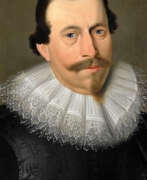

Pieter Claesz was a Dutch Golden Age painter of still lifes.
He and Willem Claeszoon Heda, who also worked in Haarlem, were the most important exponents of the "ontbijt" or dinner piece. They painted with subdued, virtually monochromatic palettes, the subtle handling of light and texture being the prime means of expression. Claesz generally chose objects of a more hospitable kind than Heda, although his later work became more colourful and decorative. Claesz's still lifes often suggest allegorical purpose, with skulls serving as reminders of human mortality. The two men founded a distinguished tradition of still life painting in Haarlem. Pieter Claesz was influenced by the artist movement 'Vanitas'.


François Clouet was a major French Renaissance portrait painter.
François was the son of the painter Jean Clouet (1485-1540), from whom he learned painting. He became the favorite court portraitist of Kings Francis I, Henry II, Francis II and Charles IX.
François Clouet became famous for his mastery, accurately conveying the characters of people and meticulously painting their costumes.


Daniele Crespi was an Italian painter and draughtsman. He is regarded as one of the most original artists working in Milan in the 1620s. He broke away from the exaggerated manner of Lombard Mannerism in favour of an early Baroque style, distinguished by clarity of form and content. A prolific history painter, he was also known for his portraits.


Domenico Passignano, born Domenico Cresti or Crespi, was an Italian painter of a late-Renaissance or Counter-Maniera (Counter-Mannerism) style that emerged in Florence towards the end of the 16th century.


Giovanni da Bologna, also known as Jean de Boulogne (French), Giambologna (Italian), Fiammingo (Italian) and Jehan Boulongne (Flemish), was the last significant Italian Renaissance sculptor, with a large workshop producing large and small works in bronze and marble in a late Mannerist style.


Polidoro Caldara, usually known as Polidoro da Caravaggio was an Italian painter of the Mannerist period, "arguably the most gifted and certainly the least conventional of Raphael's pupils", who was best known for his now-vanished paintings on the facades of Roman houses.


Antonio da Correggio was a seminal figure in the Italian Renaissance, particularly renowned for his mastery in illusionistic fresco decoration. His works bridged the gap between the High Renaissance and the Baroque movement, influencing many subsequent artists in the Baroque and Rococo styles. Antonio da Correggio is celebrated for his dynamic compositions, innovative use of perspective, and the sensual nature of his paintings, which often depicted religious and mythological themes.
Antonio da Correggio's notable contributions include the frescoes in the dome of San Giovanni Evangelista and the Cathedral of Parma. His work, characterized by dramatic foreshortening and emotional intensity, represents a pioneering approach to dome decoration, creating an immersive experience for the viewer. The "Assumption of the Virgin" in Parma's Cathedral is particularly renowned for its dynamic composition and innovative perspective, offering a celestial vision filled with angels and figures in motion, heralding the artistic transitions towards the Baroque era.
Additionally, Antonio da Correggio's mythological series, such as "Jupiter and Io" and "Leda and the Swan," demonstrate his ability to blend sensuality with divine themes, presenting these narratives with a tender and intimate touch that was groundbreaking for his time.
For collectors and experts in art and antiques, Correggio's works epitomize the transition in art styles from the Renaissance to the Baroque, showcasing his unique ability to convey emotion and movement through his innovative techniques and compositions.
To delve deeper into the life and works of Antonio da Correggio, consider subscribing to updates from art institutions or platforms that specialize in Renaissance art, ensuring you stay informed about exhibitions, sales, and scholarly research related to this influential artist.


Jacopo da Empoli, real name Jacopo Chimenti, was a prominent Italian painter, a representative of Counter-Mannerism in Italian art. This movement borrowed some features of Mannerism, but resolutely returned to the realism, harmony and poise of the High Renaissance.
Jacopo da Empoli received his artistic training in the workshop of Maso da San Friano and was inspired by the works of Pontormo and Santi di Tito. He created in Florence, small towns in Tuscany and even visited Genoa.
Jacopo da Empoli created religious paintings and portraits, but an interesting feature of his work was his unique still life paintings, completely different from those of the Dutch masters of the time.
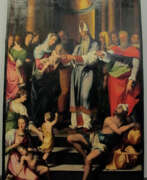

Leonardo da Pistoia, also known as Leonardo Grazia, was an Italian painter born in 1502 in Pistoia, Tuscany, and active during the Mannerism period. His career spanned until approximately 1548, during which he made significant contributions to the Italian Renaissance.
Leonardo da Pistoia's work was notably influenced by two renowned artists of the time, Fra Bartolomeo and Raphael. He is often credited for his ability to emulate Raphael's style, evident in works like his "Madonna and Child" (1516), housed in the Staatliche Museen, Berlin, which is a free copy of Raphael's "Madonna del Baldacchino." Another of his works, housed in Brussels, is derived from Raphael's "Bridgewater Madonna." These pieces reflect da Pistoia's admiration and skilled interpretation of Raphael's first and second-decade creations.
Leonardo da Pistoia's life and career were spent primarily in Italy, working in notable cities such as Rome and Naples. In Rome, he worked under Gianfrancesco Penni, known as "il Fattore," and was a copyist of Raphael's paintings. His transition to Naples marked a significant period in his career where he contributed to churches like Santa Maria del Parto a Mergellina, San Domenico Maggiore, and Monte Oliveto. His pupils in Naples included notable artists like Girolamo Siciolante da Sermoneta and Francesco Curia.
Leonardo da Pistoia's work "Cleopatra," which portrays the Egyptian queen with an asp around her neck, is a testament to his mastery in blending realism with allegorical elements. This painting, initially attributed to various artists including Bronzino and Giulio Romano, has been credited to Leonardo da Pistoia, reflecting his influence from Roman, Neapolitan, and Tuscan artistic styles.
For art collectors and experts in art history, Leonardo da Pistoia's work offers a glimpse into the evolving styles of the Italian Renaissance, particularly in how he skillfully adopted and adapted the techniques of his more famous contemporaries. His paintings, rich in historical and artistic value, are a testament to the vibrant and dynamic art scene of Renaissance Italy.
To learn more about Leonardo da Pistoia and stay informed about events and opportunities related to his work, sign up for updates on sales and auction events.


Jacopo da Pontormo, an Italian painter born in 1494, was a pivotal figure in the Mannerist movement, diverging from the High Renaissance's balanced compositions to explore more expressive and emotionally charged art. His work is celebrated for its unusual color palettes, elongated forms, and a unique approach to perspective, all of which contribute to the intensely emotional effect of his paintings.
Operating in Florence, Pontormo's art is distinguished by its vivid expressiveness and dramatic tension, characteristics that set him apart from his contemporaries. His ability to convey deep psychological complexity through his subjects has left a lasting impact on the history of art, making his works highly prized among collectors and scholars alike.
One of his most acclaimed works, the "Deposition from the Cross" in the Capponi Chapel in Florence, exemplifies his innovative approach to composition and color, marking a significant departure from traditional depictions of this biblical scene. This masterpiece, along with others like his portraits and religious paintings, can be found in some of the world's most prestigious museums and galleries.
For art collectors and enthusiasts, Jacopo da Pontormo represents the intriguing complexity of the Mannerist period, offering a window into the evolving artistic landscape of 16th-century Italy. His works not only challenge the viewer's expectations but also invite a deeper exploration of the emotional and spiritual dimensions of painting.
To stay abreast of the latest discoveries, exhibitions, and auctions related to Jacopo da Pontormo's art, we encourage you to sign up for updates. This subscription is your gateway to the refined world of Renaissance and Mannerist art, ensuring you're informed about opportunities to enrich your collection with works by this exceptional artist.


Jacopo Bassano, known also as Jacopo dal Ponte, was an Italian painter who was born and died in Bassano del Grappa near Venice, and took the village as his surname. Trained in the workshop of his father, Francesco the Elder, and studying under Bonifazio Veronese in Venice, he painted mostly religious paintings including landscape and genre scenes. He often treated biblical themes in the manner of rural genre scenes, portraying people who look like local peasants and depicting animals with real interest. Bassano's pictures were very popular in Venice because of their depiction of animals and nocturnal scenes. His four sons: Francesco Bassano the Younger, Giovanni Battista da Ponte, Leandro Bassano, and Girolamo da Ponte, also became artists and followed him closely in style and subject matter.


Vincenzo dalle Destre or Vincenzo dai Destri was an Italian painter who worked in Treviso and Venice from 1488.
In 1530 Destre was included among the members of the brotherhood of painters of Venice. He painted altars and churches with scenes from the Bible, and his skill was highly valued by his contemporaries.


Jacob de Backer was a Flemish painter.
He is known to have worked in Antwerp between about 1571 and 1585 and was a very prolific painter. Many paintings and altarpieces in Antwerp and Italy are signed with his name. Bakker also created many elaborate compositions on allegorical subjects.


Jan de Baen was a Dutch portrait painter who lived during the Dutch Golden Age. He was a pupil of the painter Jacob Adriaensz Backer in Amsterdam from 1645 to 1648. He worked for Charles II of England in his Dutch exile, and from 1660 until his death he lived and worked in The Hague. His portraits were popular in his day, and he painted the most distinguished people of his time.


Louis de Caullery was a Flemish painter who is known for his architectural scenes, city views, genre scenes, allegorical compositions and history paintings. He was one of the pioneers of the art genre of courtly gatherings and the garden parties (fête champêtre) in Flemish painting.


Juan Fernández de Navarrete was a distinguished Spanish Mannerist painter, renowned for his significant contribution to the Renaissance period. Born in 1526 in Logroño, Spain, Navarrete's life was marked by a childhood illness that left him without hearing, earning him the nickname "El Mudo" (The Mute). Despite his challenges, he became a prolific artist, communicating his thoughts and ideas through the powerful medium of painting.
Navarrete's artistic journey began under the tutelage of Fray Vicente de Santo Domingo, a Hieronymite monk in Estella. His talent and skill flourished, leading him to study in major Italian cities like Naples, Rome, Florence, and Milan. During this time, Navarrete was heavily influenced by Venetian art, particularly by the works of Titian, whom he is believed to have studied with.
In 1568, Navarrete's career took a significant turn when he was appointed as the court painter to Philip II of Spain. This role led him to work on the Escorial, a grand monastery-palace still under construction. Here, Navarrete's works were instrumental in bringing Venetian influences to Spanish art. His paintings, characterized by rich, warm coloration and bold designs, were a departure from the traditional Spanish style of the time. Among his most celebrated works at the Escorial are "Nativity," where the light emanates from the infant Saviour, and the "Baptism of Christ," now housed in the Prado Museum.
His art, often depicting religious themes, was marked by a blend of sketchy distances with rich color and realistic foreground effects. Despite the challenges of his disability, Navarrete's works exhibit a remarkable depth of emotion and skill, securing his place as a significant figure in the Spanish Renaissance.
Juan Fernández de Navarrete's legacy continues to inspire and captivate art enthusiasts, collectors, and experts. His works, a blend of Spanish tradition and Venetian influence, represent a unique chapter in the history of art. For those interested in exploring Navarrete's masterpieces, a visit to the Prado Museum in Madrid is a must.
For updates on exhibitions and events featuring Juan Fernández de Navarrete's work, sign up for our newsletter. Stay informed about upcoming sales and auction events specifically related to this master of Spanish Renaissance art in a business-like, straightforward manner.


Blas de Prado, a distinguished Spanish painter, was born around 1545 in Camarena, near Toledo. A pupil of Alonso Berruguete, Prado is renowned for his contributions to Spanish Renaissance art. His works, characterized by their classical and naturalistic styles, reflect a deep understanding of Italian influences and a mastery in portraiture.
Prado's career was predominantly centered in Toledo, where he created numerous works for local churches and also received patronage from the Spanish royal court. His painting style is noted for its blend of Italian classicism and Venetian color influences, visible in his religious and portrait works. One of his significant contributions to Spanish art was introducing still-life painting, as noted by the art theorist Francisco Pacheco.
Among Prado's most notable works is "The Holy Family with Saints Ildephonsus, John the Evangelist and the Master Alonso de Villegas" (1589), which is housed in the Museo del Prado, Madrid. This masterpiece showcases his skill in blending monumental Italian classicism with realistic portrayal. His other significant works include "The Descent from the Cross" at Valencia Cathedral, showcasing influences from Michelangelo, and a series of frescoes in the chapel of the Quinta de Mirabel, Toledo.
Prado's legacy extends beyond his paintings. His influence as a teacher is evident in the works of his students, like Juan Sánchez Cotán, a significant figure in Spanish still-life painting. Blas de Prado's artistry left an indelible mark on the Spanish Renaissance, making him a figure of immense interest to collectors and experts in art and antiques.
For enthusiasts looking to delve deeper into the world of Spanish Renaissance art, especially the works of Blas de Prado, subscribing to our updates can be a rewarding journey. Our updates provide exclusive information on new product sales and auction events related to Prado's works, helping collectors and art aficionados stay informed about this illustrious artist. Sign up today and join a community passionate about the richness of Spanish art history.


Pedro de Raxis was a Spanish painter and gilder known for his contributions to the Granadan school of art. Born in 1555 in Alcalá la Real, Jaén, Raxis became a key figure in Granada art of the Counter-Reformation era. Characterized by vivid narrative and Mannerist influences, his works are characterized by intense, luminous colors and delicate composition.
Raxis's career was marked by numerous significant commissions. Among his best-known works are the murals for the church of San Cecilio in Granada (1580), the retablos of Santa María Mayor de Alcaudete (Jaén) and Asunción de María in Granada Cathedral (1615). These works demonstrate his exceptional skill in estofado, a technique involving the gilding and polychroming of statues and altarpieces.
One of Raxis's most famous works is Aparicion de la Virgen a San Jacinto, preserved in the Granada Museum of Fine Arts. This painting, dating from around 1600, represents a significant achievement in Raxis's artistic journey. It illustrates the mystical ecstasy and contemplative rapture characteristic of Spanish Baroque culture. The expressive depth and rich tonal range of the painting became more evident after its restoration in 1998.
Pedro de Raxis's influence extended beyond his paintings. Contemporaries such as Francisco Pacheco praised his mastery of estofado and gilding. Raxis established one of the most prolific and versatile workshops in Granada, which left an indelible mark on the artistic landscape of Andalusia.
For collectors and art experts, Raxis' work remains a testament to the rich cultural heritage of the Granada school. His paintings not only reflect the artistic fervor of the era, but also provide a glimpse into the religious and cultural world of Counter-Reformation Spain.
To delve deeper into the world of Pedro de Raxis and to keep up to date with new sales and auction events related to this master of the Granada School, subscribe to our updates. Our subscription will keep you up to date with the latest offers and events.


Simon de Vos was a Flemish painter, graphic artist and art collector, a member of the Guild of St. Luke in Antwerp.
Simon de Vos specialized early in his career in cabinet and genre painting in the style of the Utrecht Caravagistes. His depictions of merry company and scenes from fables are well known. From about 1640 he increasingly painted large-scale religious, allegorical and historical scenes in the style of Peter Paul Rubens and Antoni van Dyck. Among his pupils was Jan van Kessel the Elder (1626-1679).
Simon de Vos was financially successful: by the end of his life he owned four estates in Antwerp and a collection of 290 paintings.


Perino del Vaga (nickname of Piero Bonaccorsi) was an Italian painter and draughtsman of the Late Renaissance/Mannerism.
Del Vaga's style was renowned for his vitality and elegance. His paintings are considered important in the mediation between the Roman Raphaelesque tradition and the first Florentine Mannerism. He combined the manners of Raphael and Andrea del Sarto. Many of his works were engraved, even in his own lifetime. Daniele da Volterra, Girolamo Siciolante da Sermoneta, Luzio Romano and Marcello Venusti were among his principal assistants.


Nicolò dell'Abate was an influential Italian Mannerist painter, known for his vital role in integrating the Italian Renaissance's artistic principles with French Mannerism. Born around 1509 in Modena, Italy, his early experiences under local Modenese sculptors and painters like Il Garofalo and Dosso Dossi shaped his initial artistic style, which featured elaborate landscapes and mythological narratives.
Abate's journey took a pivotal turn in 1552 when he moved to France to work at the Château de Fontainebleau under the patronage of Francesco Primaticcio. This period marked a significant evolution in his style as he engaged deeply with French cultural and artistic norms. At Fontainebleau, he was instrumental in the decoration of royal spaces, bringing a distinctly Italian Mannerist flair to his frescoes and tapestries. His works from this period, such as 'The Death of Eurydice' and landscapes for Charles IX, showcased a refined integration of narrative and environment, significantly influencing later French artists like Claude Lorrain and Nicolas Poussin.
Abate's legacy extends beyond his frescoes and canvases, touching on the ephemeral aspects of art through festive decorations for courtly celebrations, which though temporary, left a lasting impact on the French artistic landscape. His contribution to the School of Fontainebleau helped establish a stylistic foundation that would carry forward into the classical age of French painting.
For collectors and enthusiasts eager to explore Nicolò dell'Abate's works and influence further, signing up for updates can provide exclusive insights into upcoming exhibitions, sales, and auctions featuring this master's timeless works. This subscription ensures you remain informed about all significant events and opportunities related to Abate's enduring artistic legacy.


Rutilio di Lorenzo Manetti was an Italian painter of late-Mannerism or proto-Baroque, active mainly in Siena. He was influenced and/or taught by the local artists Francesco Vanni and Ventura Salimbeni. His style moved from one derived from Barocci to a more Caravaggesque manner after the first decade of the 17th century. Among his masterpieces are his contributions to the Casino Mediceo, which he worked alongside Matteo Rosselli, Giovanni Lanfranco, and Cesare Dandini. One of his pupils or followers is Stefano Volpi.


Santi di Tito was one of the most influential and leading Italian painters of the proto-Baroque style – what is sometimes referred to as "Counter-Maniera" or Counter-Mannerism. Santi completely rejected the maniera of Bronzino, and embraced a classical Reformist and naturalistic style. Santi's mature style is reflected in his masterpiece of the Vision of Saint Thomas Aquinas, also known as Saint Thomas Dedicating His Works to Christ located in the church of San Marco in Florence.


Tiberio di Tito was an Italian painter. He was the son and pupil of the late-Mannerist painter Santi di Tito. He specialized in portrait painting, including small pencil portraits, on which he was much employed by Cardinal Leopoldo de' Medici.


Giovanni di Niccolò de Luteri, better known as Dosso Dossi, was an Italian Renaissance painter who belonged to the School of Ferrara, painting in a style mainly influenced by Venetian painting, in particular Giorgione and early Titian.
From 1514 to his death he was court artist to the Este Dukes of Ferrara and of Modena, whose small court valued its reputation as an artistic centre. He often worked with his younger brother Battista Dossi, who had worked under Raphael. He painted many mythological subjects and allegories with a rather dream-like atmospheres, and often striking disharmonies in colour. His portraits also often show rather unusual poses or expressions for works originating in a court.


Jean Duvet was a French Renaissance goldsmith and engraver, now best known for his engravings. He was the first significant French printmaker. He produced about seventy-three known plates, that convey a highly personal style, often compared to that of William Blake, with very crowded compositions, a certain naive quality, and intense religious feeling. According to Henri Zerner, his work has a "freedom and immediacy that have no equivalent in Renaissance printmaking".


Lucas van Valckenborch was a Flemish painter, mainly known for his landscapes. He also made contributions to portrait painting, and allegorical and market scenes. Court painter to Archduke Matthias, the governor of the Spanish Netherlands in Brussels, he later migrated to Austria and then Germany where he joined members of his extended family of artists who had moved there for religious reasons.




